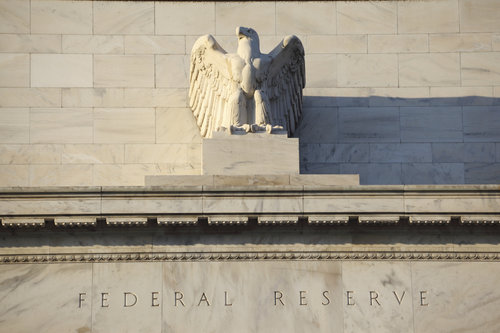Interest rates are staying right where they are…for the time being.
And so the speculation continues for another month.
After weeks of outside editorial, predictions and warnings, the Federal Reserve announced today that it will leave interest rates at their current level for at least another month.
The federal funds rate – the interest rate the Fed charges banks to lend money to each other overnight, and the rate that has the most sway over mortgage rates and other forms of credit – has hovered between 0 and 0.25 percent since Dec. 2008, when then-Fed Chair Ben Bernanke slashed the rate to combat The Great Recession.
Keeping Interest Rates Low
Some analysts had speculated that with the U.S.’ slowly strengthening economy and record-high stock market, the Fed would finally allow its 0-percent policy to slip. However, the statement from the Federal Open Market Committee (or FOMC, the Fed group that makes final decisions on interest rates) indicated concern with falling oil prices and the volatility in foreign stock markets (especially China).
“Recent global economic and financial developments may restrain economic activity somewhat, and are likely to put further downward pressure on inflation in the near term,” the FOMC stated. “The Committee currently anticipates that, even after employment and inflation are near mandate-consistent levels, economic conditions may, for some time, warrant keeping the target federal funds rate below levels the Committee views as normal in the longer run.”
In a press conference following the FOMC’s announcement, current Fed Chair Janet Yellen doubled down on the committee’s concerns, saying that China, and other emerging markets, “bears close watching.” Recent falls in the Chinese stock market caused considerable ripple effects in other markets, including the U.S.
So What Now?
The Fed’s announcement does not come as a complete surprise – Fed officials had hinted for weeks that China’s lax performance would likely delay any interest rate increase – but economic analysts are divided in their responses.
For instance, Josh Bivens, the research and policy director for the Economic Policy Institute, applauded the Fed’s reserve in a statement: “We hope [Fed] officials continue their pragmatic, data-based approach and allow unemployment to keep moving lower, and only tighten after there is a significant and durable increase in inflation.”
Ady Barkan, the director of the Fed Up campaign (a coalition of progressive groups), issues a similar statement: “With the recovery still far too weak in too many communities, it would have been economically devastating – and immoral – to slow the economy.”
But other analysts were not so enthusiastic with Yellen and the FOMC’s decision. Doug Duncan, the chief economist with Fannie Mae, argued in a statement that the Fed’s hesitancy will only stoke further market uncertainty.
“With the unemployment rate at a low level, just shy of the Fed’s current median projection of the long-run rate, and the expectation that recent market volatility will be temporary, it is unclear what will move the Fed to begin a long process to normalization,” Duncan said. “Prior commentaries about low inflation being transitory were apparently not a motivation for today’s inaction. One thing the Fed has accomplished today is to increase uncertainty around each future meeting date, which does not help foster improvement in the housing market.”
The FOMC’s next meeting is Oct. 27 and 28, and it’s guaranteed that interest rates will be on the top of its agenda.

